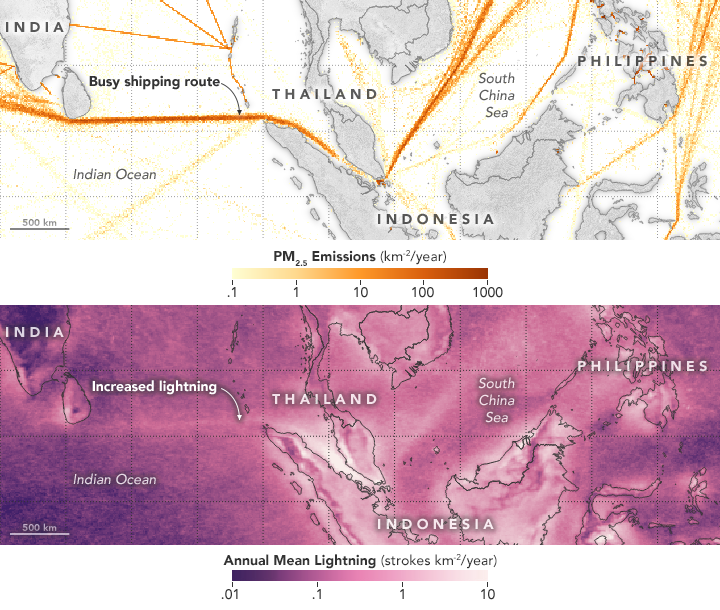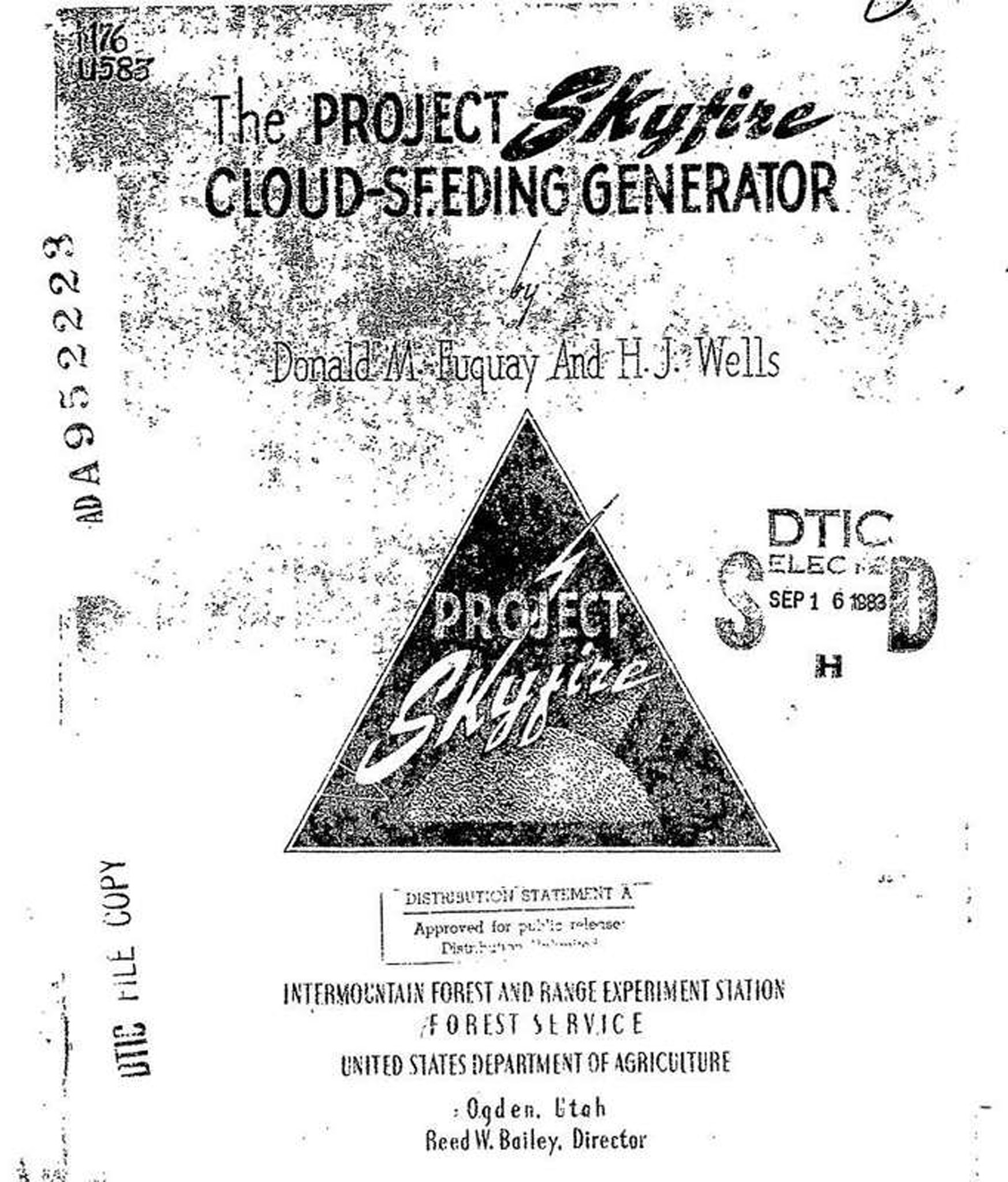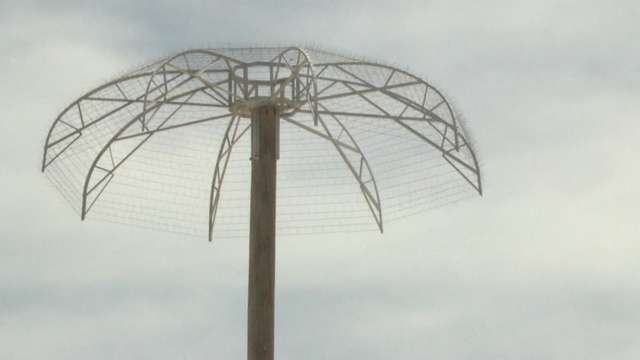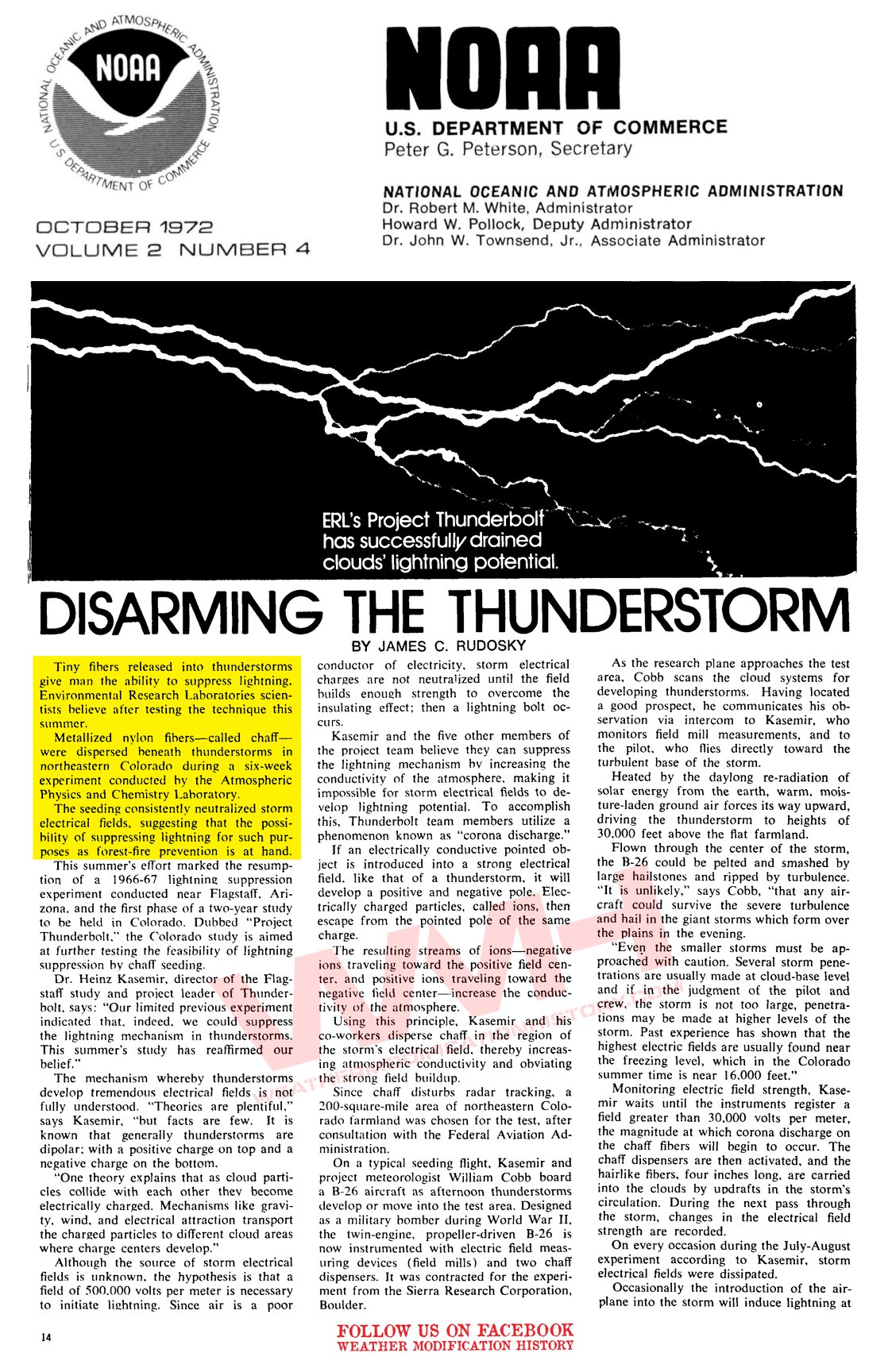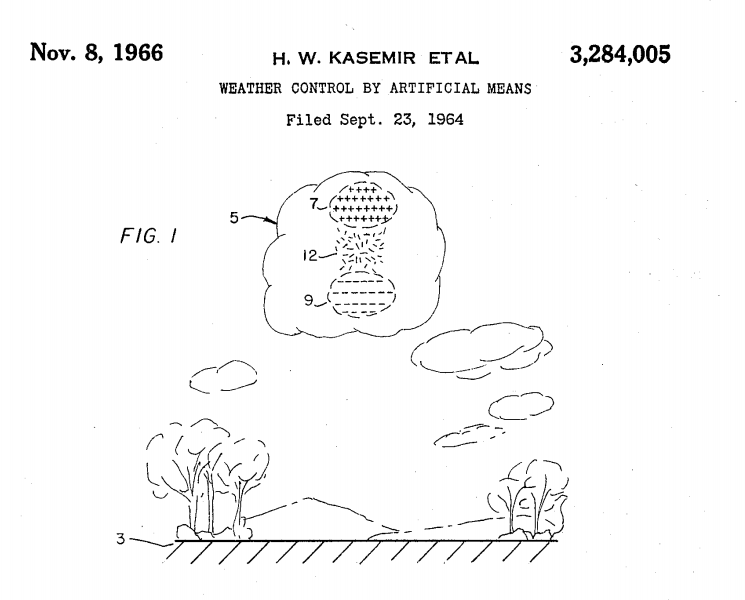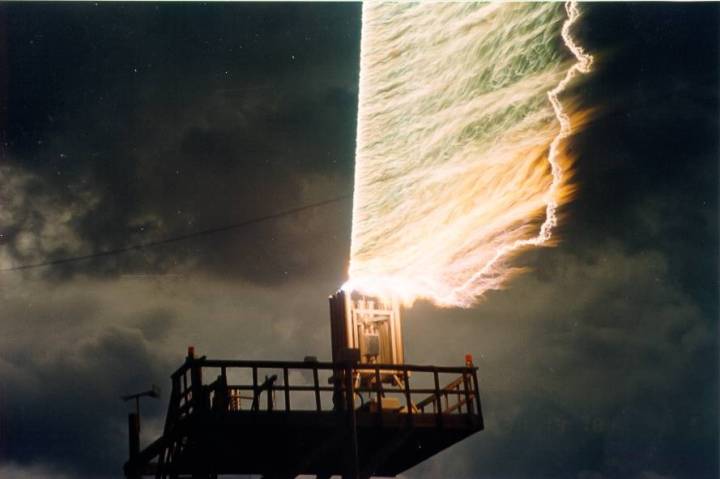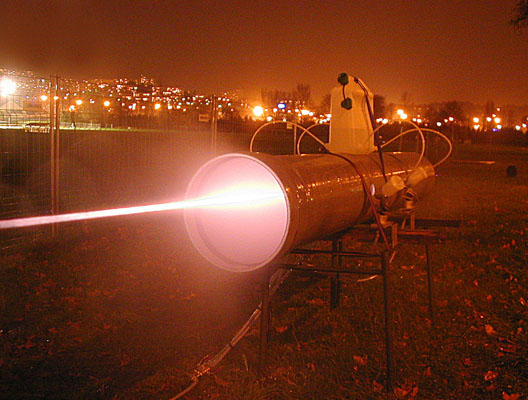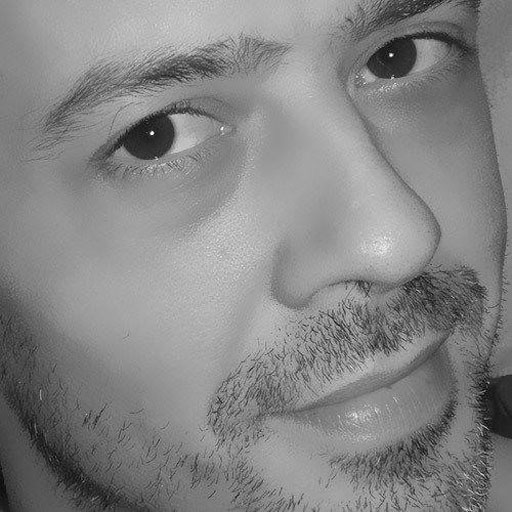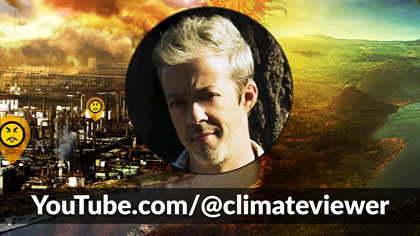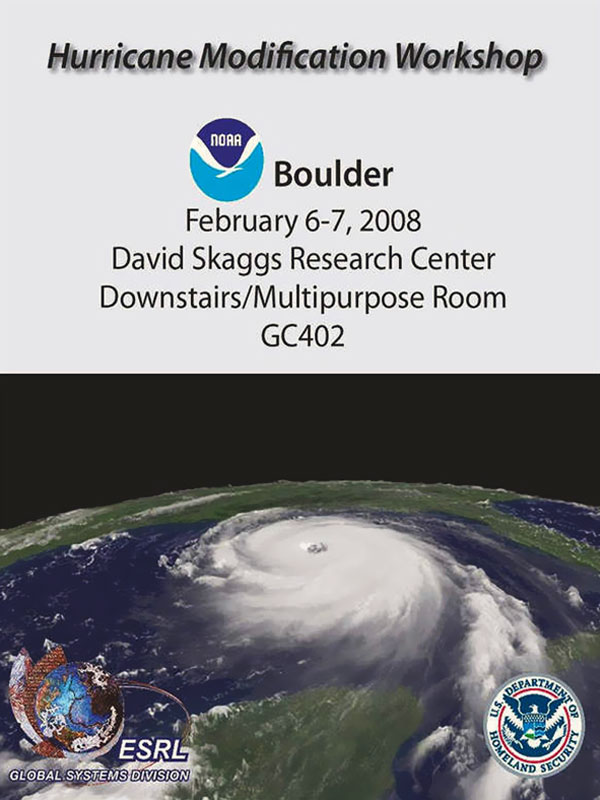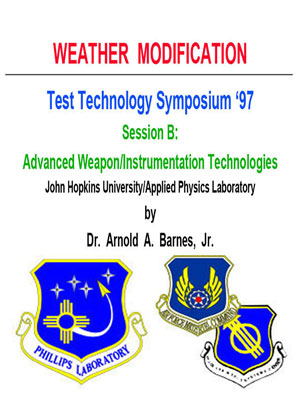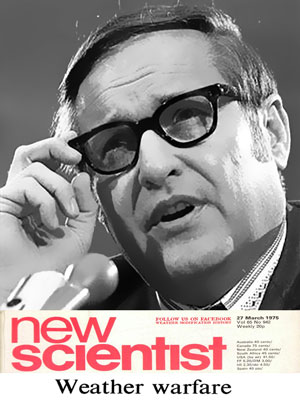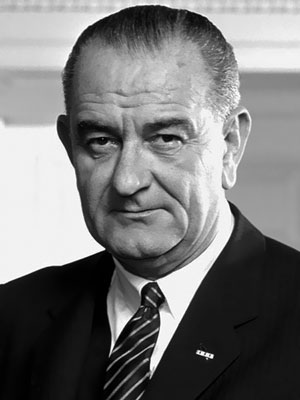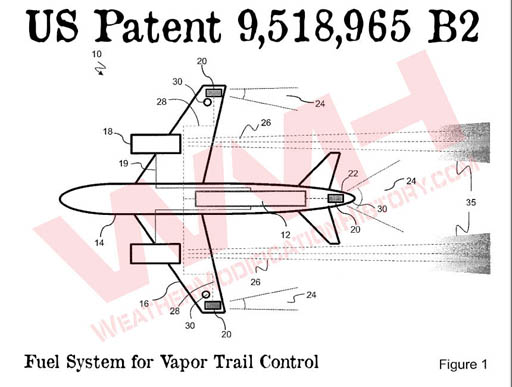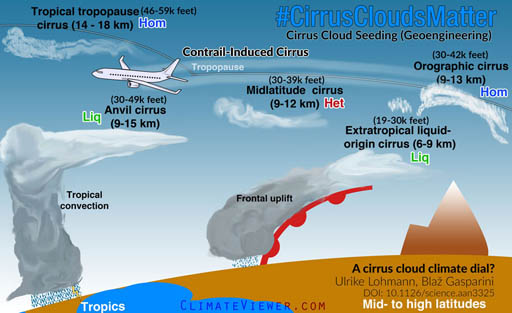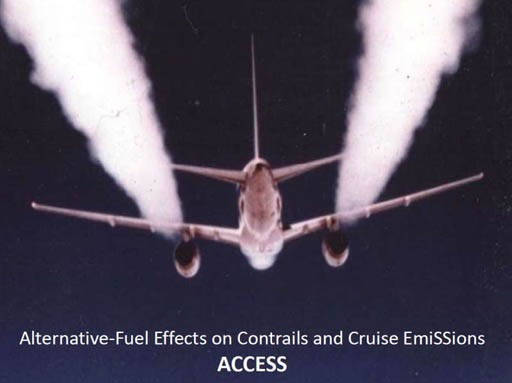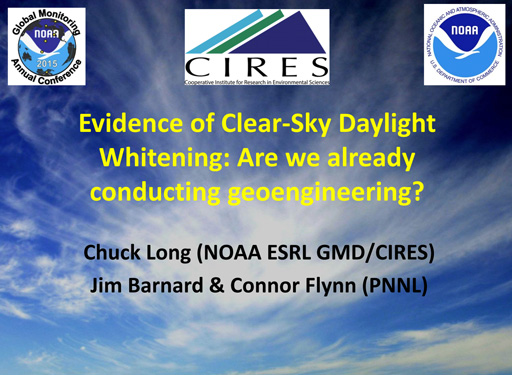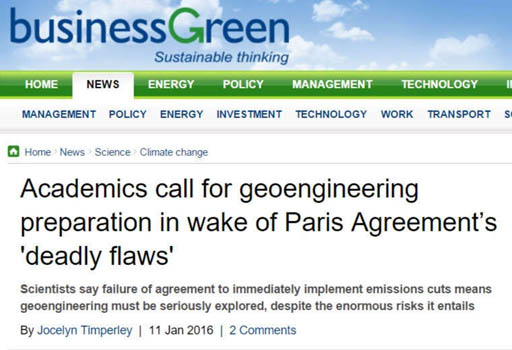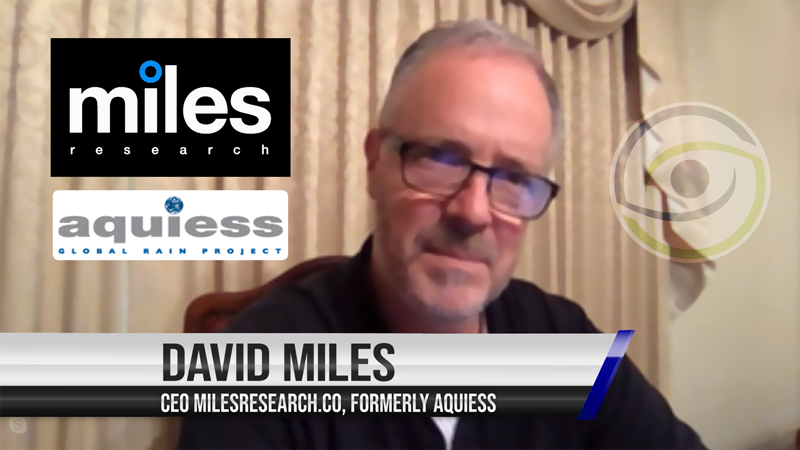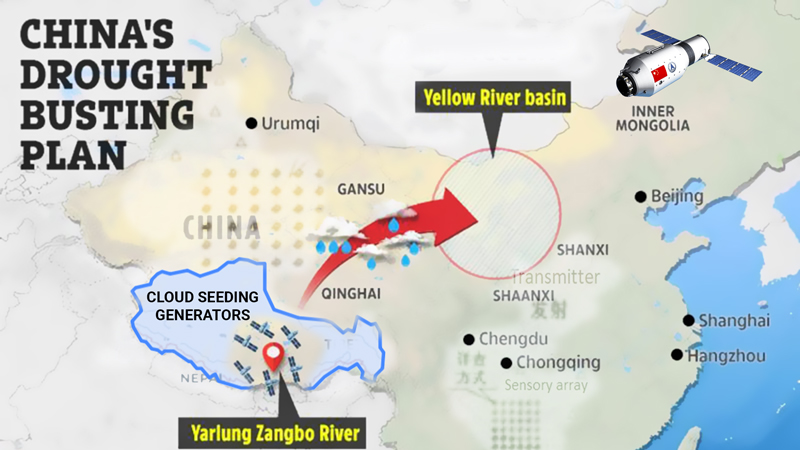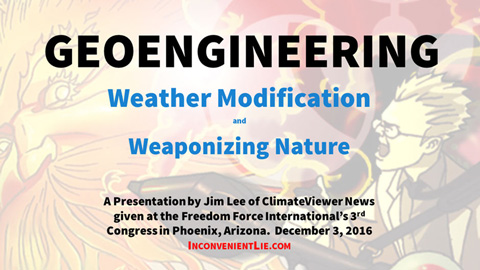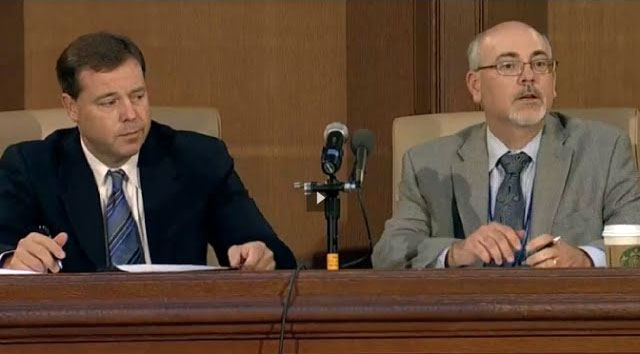Ship Tracks
There’s Something in the Air (Ship Track Affect Lightning)
The connection between people and lightning is visible along two of the world’s busiest shipping lanes in the Indian Ocean and the South China Sea. The top map shows the emissions of particles from ship exhaust (orange), calculated from a database of maritime vessel traffic in the region. The second map shows the average density of lightning per year from 2005 to 2016, as detected by the World Wide Lightning Location Network (WWLLN). The narrow light-purple bands indicate where increases in lightning occurred. Turn on the image comparison tool to see where areas of increased lightning coincide with shipping routes.
https://earthobservatory.nasa.gov/images/91384
#Map shows that #lightning follows shipping lanes: As it turns out particles in ship exhaust increase the likelihood and intensity of thunderstorms. Really cool fact that I had never considered! Source: https://t.co/WaTSDf92V4 pic.twitter.com/7goJVhHH9U
— Simon Kuestenmacher (@simongerman600) July 8, 2018
CLOUD SEEDING
WMH: Project Skyfire: Preventing Forest Fires with Cloud Seeding
https://climateviewer.com/project-skyfire-preventing-forest-fires-cloud-seeding/
CLOUD IONIZERS
WIPP protects infrastructure with metal palm trees
https://www.krqe.com/news/new-mexico/wipp-protects-infrastructure-with-metal-palm-trees/1165382948
MORE INFO ON CLOUD IONIZERS
https://climateviewer.com/tags/cloud-ionization/
CHAFF
PERFORMING ELECTRONIC COUNTERMEASURES IN THE UNITED STATES AND CANADA
Explanation of Terms. Terms used in this regulation are explained as follows:
a. Surface ECM. All types of electronic jamming, deception, or chaff dispensing done by ground-based or shipboard equipment.
b. In-flight ECM: All types of electronic jamming, deception, or chaff dispensing done by aircraft or other vehicles in flight.
c. Small Scale ECM Mission. In-flight ECM done by a single aircraft or by two to six aircraft working as a unit.
d. Large Scale ECM Mission. In-flight ECM done by seven or more aircraft working as a unit.
e. Chaff. Strips of frequency-cut metal foil, wire, or metalized glass fiber used to reflect echoes for confusion purposes. It is usually dropped from aircraft or expelled from shells or rockets as a radar countermeasure.
f. Rope. An element of chaff consisting of a long roll of metallic foil or wire designed for broad, low-frequency response.
g. Rope Chaff. Chaff that contains one or more rope elements.
h. Big Photo. An unclassified general call sign for aircraft performing in-flight ECM. (Big Photo is used by civilian contractors during in-flight ECM when operating under provisions of paragraph 2c).
i. Ground Photo. An unclassified general call sign for ground radar stations intentionally engaged in in-flight ECM.
j. Buzzer. An unclassified brevity code word. It stands for electronic jamming or deception by ECM.
k. Stream. An unclassified brevity code word. It stands for chaff drops at short intervals. These appear on a radar scope as a continuous line of interference.
l. Burst. An unclassified brevity code word. It stands for chaff drops at sufficiently long enough intervals so they appear on a radar scope as individual target returns. (For purposes of this regulation, Burst is further explained as single chaff drops of not more than 3 seconds spaced not less than 90 seconds apart, with no more than four bursts in a 40 nautical mile (NM) radius of other chaff drops.)
m. Local Frequency Clearance. A clearance for ECM in a specific area. The clearance must be coordinated with the local agencies concerned.
n. United States. The United States, as referred to in this regulation, includes the Continental United States (CONUS) ECM Area, the State of Alaska ECM Area, the State of Hawaii ECM Area, the Island of Guam ECM Area, and the Island of Puerto Rico ECM...
Restricted (ECM) Geographic Areas
Controlling Agency
LIGHTNING SUPPRESSION: Definition by American Meteorological Society
http://glossary.ametsoc.org/wiki/Lightning_suppression
https://web.archive.org/web/20180704052026/http://glossary.ametsoc.org/wiki/Lightning_suppression
Procedures to prevent the occurrence of lightning.
Seeding below cloud base with 10-cm fiber chaff in a Colorado study resulted in corona discharges that caused a discharging current to flow within developing or active thunderstorms. Electric fields below thunderstorms seeded with chaff decayed much faster than electric fields below nonseeded storms, and chaff seeding of existing thunderstorms greatly reduced cloud-to-ground flashes compared to nonseeded storms. Recent evidence suggests that chaff releases may result in a significant decrease in downwind cloud-to-ground lightning. Another experimental approach is to use lasers to discharge lightning in an overhead cloud in order to divert the flash from striking people or highly sensitive equipment on the ground; more research is needed to make this a realistic method of lightning suppression. In the 1960s, seeding with silver iodide was considered in order to produce an excess of ice crystals to cause numerous coronal discharges within the thunderstorm and reduce the need for the flash to reach the ground, but the test results were complex and difficult to identify. Finally, electric space charge was released into the atmosphere from a network of high-voltage wires on the ground to produce corona discharge, but a field test showed minimal effects on suppressing lightning.
THE NEW YORK TIMES: Weather Modifications Future
https://www.nytimes.com/1978/01/13/archives/weathermodifications-future.html
There are also indications that by injecting into thunderclouds metallized chaff, like that used for jamming radio signals, it is possible to reduce lightning bolts.
Environmental warfare is another distinct threat from our fellow beings. One day soon we may learn how to direct typhoons, to trigger earthquakes and tidal waves and microwaves that hurt humans.
NATIONAL SCIENCE FOUNDATION: Weather Modification 7th Annual Report June 30 1965
http://handle.dtic.mil/100.2/ADA319117
Experiments have also been conducted to check the feasibility of discharging a thundercloud by a corona current generated at the sharp points of chaff needles. These were dispersed from a C-47 aircraft in areas below clouds where the electric field exceeded 30,000 volts per meter. The aircraft was equipped with two cylindrical field mills which recorded the three components of the electric field. In the conduct of the experiment, the aircraft would fly below a thunderstorm during the developing stage, and record the electric field. If the field strength surpassed a value of about 30,000 volts per meter, the aircraft would retrace its previous pass and disperse the chaff. During consecutive runs back and forth, the influence of the chaff seeding on the electric field was recorded. In one series of five test runs, three out of five test flights showed that the corona discharge started as soon as the chaff was dropped from the plane, and a field limiting and discharging effect was indicated. - Page 49
NOAA National Severe Storms Laboratory 1997 by Ken Howard
Chaff released from fighter planes may suppress lightning in thunderstorms
https://blog.nssl.noaa.gov/nsslnews/wp-content/uploads/sites/21/2009/10/vol2_no1.pdf
However, the radar data do reveal that several extensive clouds of chaff were initiated over flight restricted military ranges to the southwest of Phoenix. The prevailing flow advected the chaff clouds to the north and east. Convective storms that occurred in the area likely affected by the dispersing chaff clouds were characterized by little or no CG lightning. There are no data available regarding either the in-cloud lightning character of storms on this day or the technical specifications of the chaff being used in military aircraft anti-electronic warfare systems. However, it is hypothesized that this case of severe, but low-lightning, convective storms resulted from inadvertent lightning suppression over south-central Arizona due to an extended period of numerous chaff releases over military ranges. We have compiled a substantial database of radar, satellite, and sounding data that will allow us to investigate this likelihood more thoroughly and rigorously. - Page 9
NOAA MAGAZINE: Disarming a Thunderstorm
Tiny fibres released into thunderstorms give man the ability to suppress lightning, Environmental Research Laboratories scientists believe after testing the technique this summer. Metallized nylon fibres –– called chaff –– were dispersed beneath thunderstorms in northeastern Colorado during a six week experiment conducted by the Atmospheric Physics and Chemistry Laboratory. The seeding consistently neutralized storm electrical fields, suggesting that the possibilities of suppressing lightning for such purposes as forest fire prevention is at hand.
https://www.facebook.com/WeatherModificationHistory/posts/956258227869878
ftp://ftp.library.noaa.gov/docs.lib/htdocs/rescue/journals/noaa/QC851U461972oct.pdf
GOOGLE PATENT: Weather Control by Artificial Means 1964
https://patentimages.storage.googleapis.com/5d/5a/31/9a143df0ef577f/US3284005.pdf
https://patents.google.com/patent/US3284005
GOOGLE PATENT: Chaff Release by Rockets
Projectiles, missiles or mines characterised by the warhead, the intended effect, or the material characterised by the warhead or the intended effect for dispensing materials; for producing chemical or physical reaction; for signalling ; for transmitting information for dispensing discrete solid bodies for dispensing radar chaff or infra-red material.
https://patents.google.com/patent/EP0055139A1/no
NOAA MAGAZINE: Chaff photos by ESSA Research Laboratories
ftp://ftp.library.noaa.gov/docs.lib/htdocs/rescue/journals/essa/QC851U461970jul.pdf
Page 17 to 21
US Airforce cloud seeding with fibres 1975 (VIDEO)
(30 seconds into video)
https://www.youtube.com/watch?v=C6mbCUH40ms
ENVIRONMENTAL PROTECTION : DOD Management Issues Related to Chaff
United States General Accounting Office September 1998
https://www.gao.gov/assets/230/226441.pdf
https://web.archive.org/web/20170212142004/https://www.gao.gov/assets/230/226441.pdf
The Air Force, the Navy, and the Marine Corps are the leading users of chaff. Air Force records indicate they used nearly 2 million 6- to 7-ounce bundles worldwide in fiscal year 1996 and about 1.8 million bundles in fiscal year 1997. Navy and Marine Corps aircraft together expended more than 340,000 and 354,000 similarly sized bundles in fiscal years 1996 and 1997, respectively. They also reported using 158 rolls in fiscal year 1996 and 593 rolls in fiscal year 1997. The Army currently uses very little chaff but has the capability to use it from some of its helicopters. The Army used a total of only 2,700 bundles of chaff from fiscal year 1991 to 1997. Army officials reported they plan to increase training with chaff and are developing chaff and dispensing equipment to be used on land-based vehicles. - Page 5
Chaff can show up on radar as a false weather phenomenon and may affect lightning within storms. The National Weather Service (NWS) began to observe the widespread and frequent use of chaff in the late 1980s, when it started using new and more sensitive weather radar. Radar observations show that chaff can spread over several hundreds of miles and stay in the air for up to a day. A scientist formerly with the National Oceanic and Atmospheric Administration (NOAA), who now performs weather research at the University of Oklahoma, estimated it would have taken more than 200 billion chaff particles to create a radar picture taken in Arizona in 1997 - Page 11
Radar Image of Chaff Plumes Over Southern Arizona and Southwestern New Mexico on October 8, 1997 - Page 12
Large storms will usually produce frequent lightning strikes to the ground, and there is a direct correlation between the severity of a storm and the number of such strikes. However, it has been observed that some large storms inside chaff clouds had little or no lightning. If chaff reduces lightning, it could cause forecasters to underestimate the severity of storms. NOAA scientists and a University of Oklahoma weather researcher said they would like to further study the effects of chaff on thunderstorms if they could obtain funding. DOD officials stated that the U.S. Forest Service has used chaff for a number of years to suppress lightning and prevent forest fires, and NOAA issued an environmental impact statement on lightning suppression in October 1972. DOD believes the findings of this project should be reviewed to determine the need for additional analysis of this recognized phenomenon prior to expending additional funds. - Page 15
Chaff on Radar
https://www.weather.gov/ilm/RadarChaff
https://web.archive.org/web/20160629010950/https://www.weather.gov/ilm/RadarChaff
Ex-Military Weatherman Tells News of CHAFF Weather Manipulation
https://www.youtube.com/watch?v=AXF2gWuvhn0
NCAR: Project Skyfire & Chaff Seeding 1970
https://opensky.ucar.edu/islandora/object/technotes%3A39/datastream/PDF/view
Chaff Seeding If leakage currents in a cloud can be increased by the ice crystals produced by artificial seeding, the dispersal of long chaff needles into a thundercloud should have the same effect. Moreover, in the latter case, the experiment is not complicated by an increase in the concentrations of ice in the cloud. Experiments of this kind were started by the U. S. Army Atmospheric Sciences Laboratory (Kasemir and Weickmann, 1965) and are now being continued in the APCL of ESSA. Laboratory experiments have shown that the onset of corona discharge on a 10 cm long chaff fiber is about 30 KV/m which is about twenty times lower than the field necessary to initiate lightning discharges 103 Lecture #7 Dr. Peter V. Hobbs in clouds. If such chaff were dispersed in a large column of cloud about five pounds of it, containing 10 fibers, would produce a 10 ampere corona current in a field of 70 KV/m. This current would be adequate to counterbalance the current output from an average thunderstorm (approx. 3 ampere) and should therefore suppress lightning. - Page 110
LASERS AND ROCKETS
Controlling Lightning? Rutgers University 2013
http://mpe.dimacs.rutgers.edu/2013/11/01/controlling-lightning/
A first conference on Laser-based Weather Control (LWC2011) took place in 2011. A second Conference (LWC2013) took place at the World Meteorological Organization (WMO) in Geneva last September. On the home page of the conference we find the following statement:
“As highlighted by the success of the first Conference on Laser-based Weather Control in 2011, ultra-short lasers launched into the atmosphere have emerged as a promising prospective tool for weather modulation and climate studies. Such prospects include lightning control and laser-assisted condensation, as well as the striking similarities between the non-linear optical propagation and natural phenomena like rogue waves or climate bifurcations. Although these new perspectives triggered an increasing interest and activity in many groups worldwide, the highly interdisciplinary nature of the subject limited its development, due to the need for enhanced contacts between laser and atmospheric physicists, chemists, electrical engineers, meteorologists, and climatologists. Further strengthening this link is precisely the aim of the second Conference on Laser, Weather and Climate (LWC2013) in Geneva, gathering the most prominent specialists on both sides for tutorial talks, free discussions as well as networking.”
Conference on Laser-Based Weather Control
http://www.laserweatherandclimate.org/2015/index.php
HAARP, Project NIMBUS, and the Fire of the Gods
https://climateviewer.com/2014/10/04/haarp-project-nimbus-fire-gods/
The Pentagon Launches Plan to Master Lightning
https://investorshub.advfn.com/boards/read_msg.aspx?message_id=44686860
DARPA request for Lightning research corporate partners (Project NIMBUS)
https://climateviewer.com/2018/07/darpa-baa-10-18.pdf
https://web.archive.org/web/http://www.darpa.mil/Our_Work/DSO/Programs/Nimbus.aspx
http://www.darpa.mil/WorkArea/DownloadAsset.aspx?id=2400
University of Florida Lightning Research Group - Rocket-Triggered Lightning
http://www.lightning.ece.ufl.edu/
In October 1994, the University of Florida and Camp Blanding Florida Army National Guard Base signed an agreement forming the International Center for Lightning Research and Testing (ICLRT) for the purpose of advancing the science and technology of lightning. The Center occupies over 100 acres at Camp Blanding, about 45 km north-east of Gainesville, Florida. Airspace is controlled at Camp Blanding so that lightning initiation from overhead thunderclouds using the rocket-and-wire technique can be routinely performed and the resulting triggered lightning studied, in addition to the study of nearby natural lightning (an average of 5 to 6 natural lightning strikes occur on the site each summer). In February 1995, The Electric Power Research Institute (EPRI) donated $1,500,000 (original value) of measurement and other equipment (including six Nicolet digitizing oscilloscopes) to the Center. In May 1997, the University of Florida (UF) in Gainesville donated and installed a 2500 square foot mobile home (value $40,000) to the Center in order to make available both research and living space for UF and visiting investigators. During summers 1995 to 2007 over 40 researchers (excluding UF faculty, students and staff) from 15 countries representing 4 continents have performed experiments at the Center concerned with various aspects of atmospheric electricity, lightning, and lightning protection. Since 2005, the ICLRT has been operated jointly by the University of Florida and the Florida Institute of Technology (FIT)
- Lightning Initiation, Propagation, Attachment, and Ionospheric Effect, 2010-2014, DARPA.
- Lightning: Electromagnetic Environment and Source Parameters, 2009-2014, NSF.
- Lightning and Propagation, 2009-2010, US Dept. Defense/DARPA.
- Lightning Research and Testing at Camp Blanding, 2009-2010, NASA.
- A Characterization of the Close Electric and Magnetic Fields and Thunder of Lightning from the UF Multiple Station Experiment, 1999-2010, Department of Transportation, Federal Aviation Administration.
- Update Direct-Strike Lightning Environment for Stockpile-to-Target Sequence Supplement LLNL - Contract #B568621, 2007-2010, Lawrence Livermore Laboratory.
New Laser Technology Developed by UA Could Divert Lightning Strikes
https://uanews.arizona.edu/story/new-laser-technology-developed-by-ua-could-divert-lightning-strikes
‘DRESSED’ LASER AIMED AT CLOUDS MAY BE KEY TO INDUCING RAIN, LIGHTNING
“Since we have control over the length of a filament with our method, one could seed the conditions needed for a rainstorm from afar. Ultimately, you could artificially control the rain and lightning over a large expanse with such ideas.“
http://www.eurekalert.org/pub_releases/2014-04/uocf-la041714.php
Terawatt Laser Beam Shot in the Clouds Provokes Lightning Strike
Researchers generated filaments that are too short-lived to trigger a real lightning strike. According to the French and German scientists, the fast pulses sent from the laser will be able to provoke thunder strikes on demand.
http://www.infoniac.com/science/terawatt-laser-beam-shot-clouds-provokes-lightning-strike.html
MORE INFO
Ten Technologies to Own the Weather Today!
https://climateviewer.com/2017/11/07/ten-technologies-to-own-the-weather-today/


